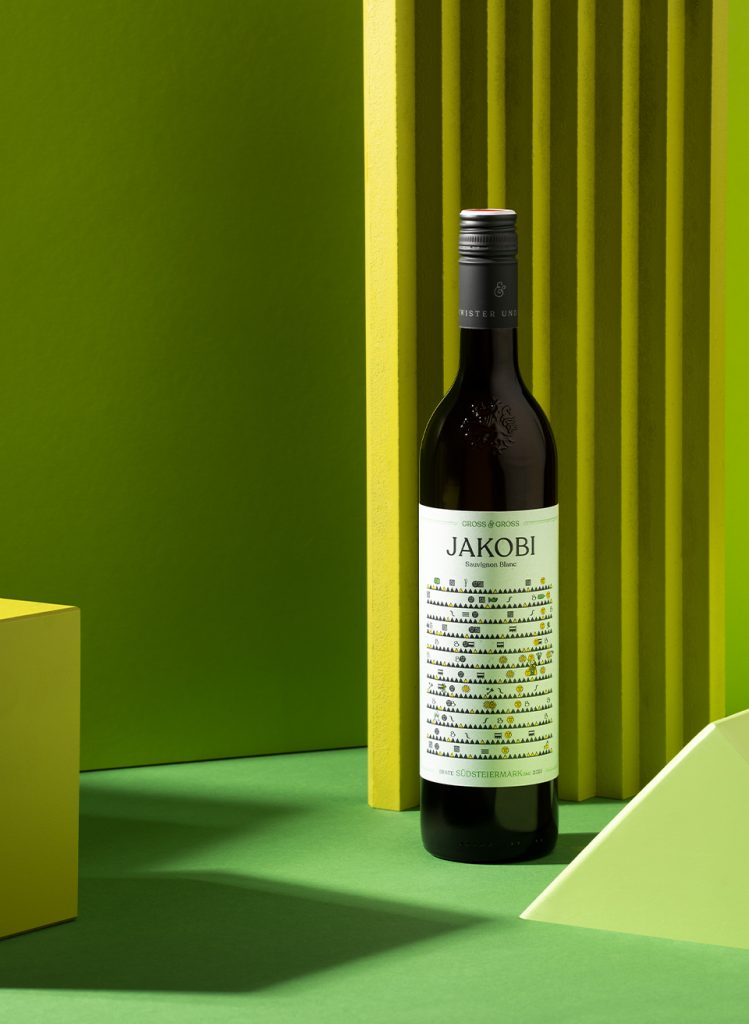
Jakobi Sauvignon Blanc
Some hear it on the grapevine – we write about it. The Jakobi bottle label tells of the vintage that shaped it and the special features which make for its taste (elegant and spicy), using both our own symbols from viticulture as well as from the Old Farmer’s Almanac – sun, moon and harvest, to only name a few. In the past, those were regarded as formative events that could determine not just harvest itself, but an entire life. For us, Jakobi is always a story with a feelgood ending, one way or the other.
Pretty symbolic. The Old Farmer’s Almanac is considered Styrian cultural heritage. As is Sauvignon Blanc, at least in our opinion.
It therefore seems quite opportune that we have been endorsed to use symbols from the Old Farmer’s Almanac for the Jakobi label. They depict frost, heat, and everything else of importance which has happened weatherwise. As even the Old Farmer’s Almanac lacks the right words, or rather symbols, on rare occasions, we have additionally created our own viticulture symbols to help us tell the whole story. Year in, year out – or rather: vintage – this provides a picture of a particular wine: Jakobi.
In fact, the Old Farmer’s Almanac has a great history of its own. Originally created in the 18th century for the illiterate part of the population, it was also known as “Mandlkalender”, with “Mandl” being the regional dialect word for “figure” as it depicts half-length figures of male and female saints. In addition to the weather, this calendar also interpreted moon phases, name days and holidays, and was therefore used by people as a reference point as to what to expect in the year ahead. Today, the symbols on the bottle label of our Jakobi do not point to the future, but to the past. One could also say, for Jakobi, last year’s weather is never the snows of yesteryears or simply water under the bridge. Jakobi bears the name of the patron saint of the weather for a reason.
The symbols of the Farmer’s Calendar at a glance
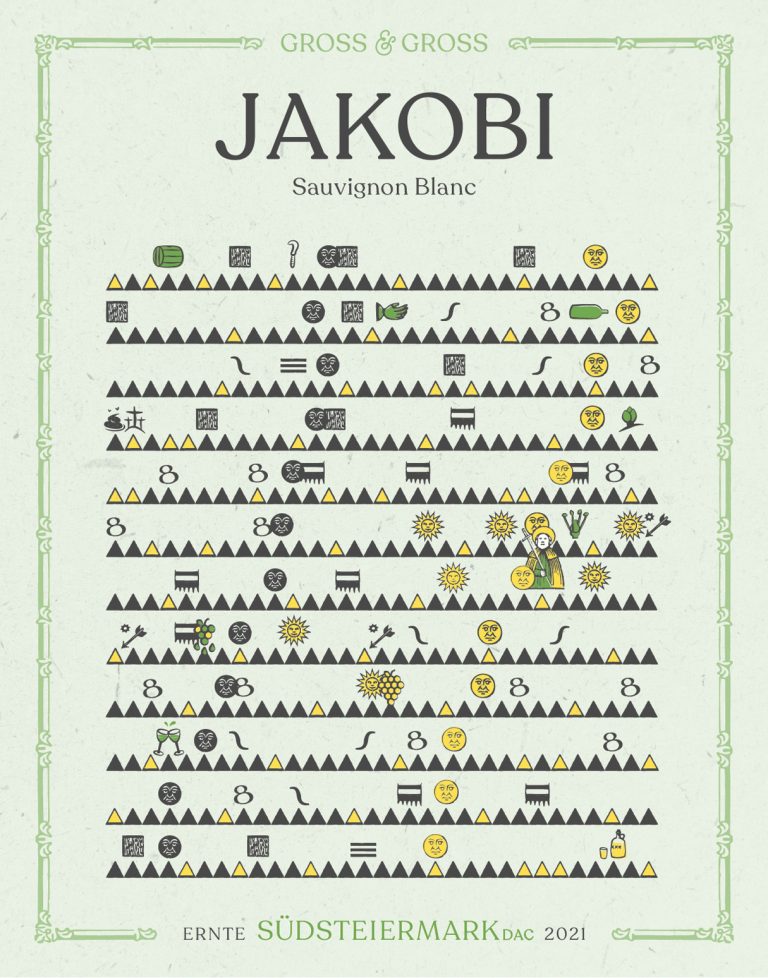
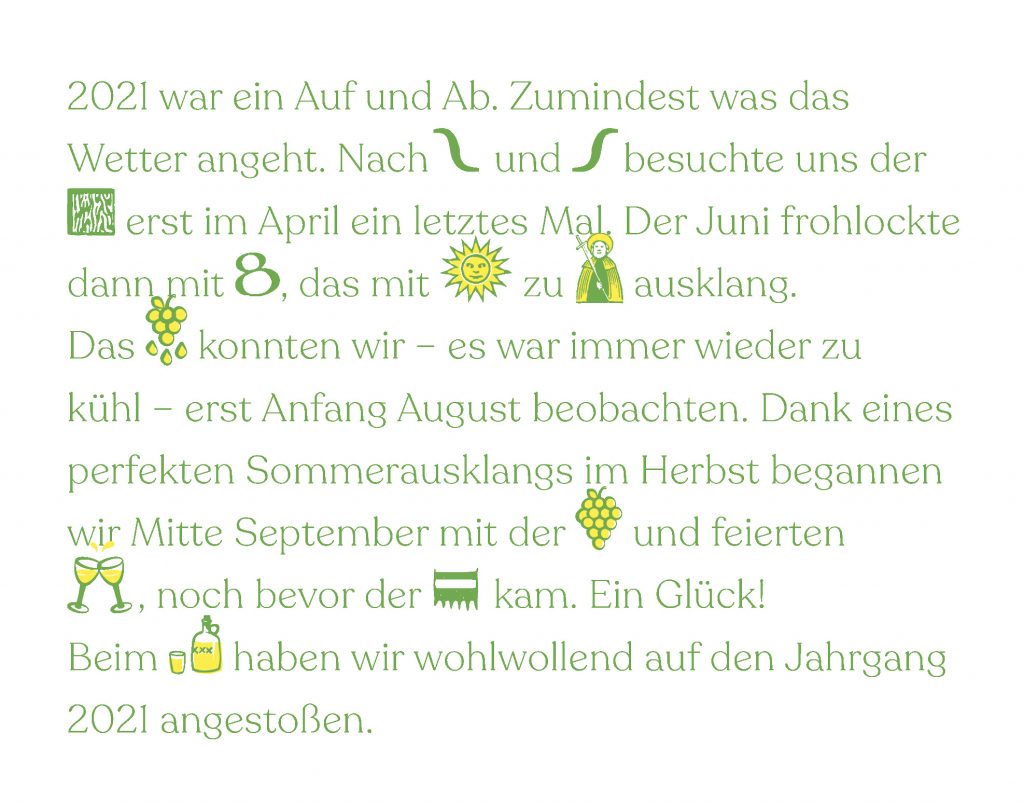
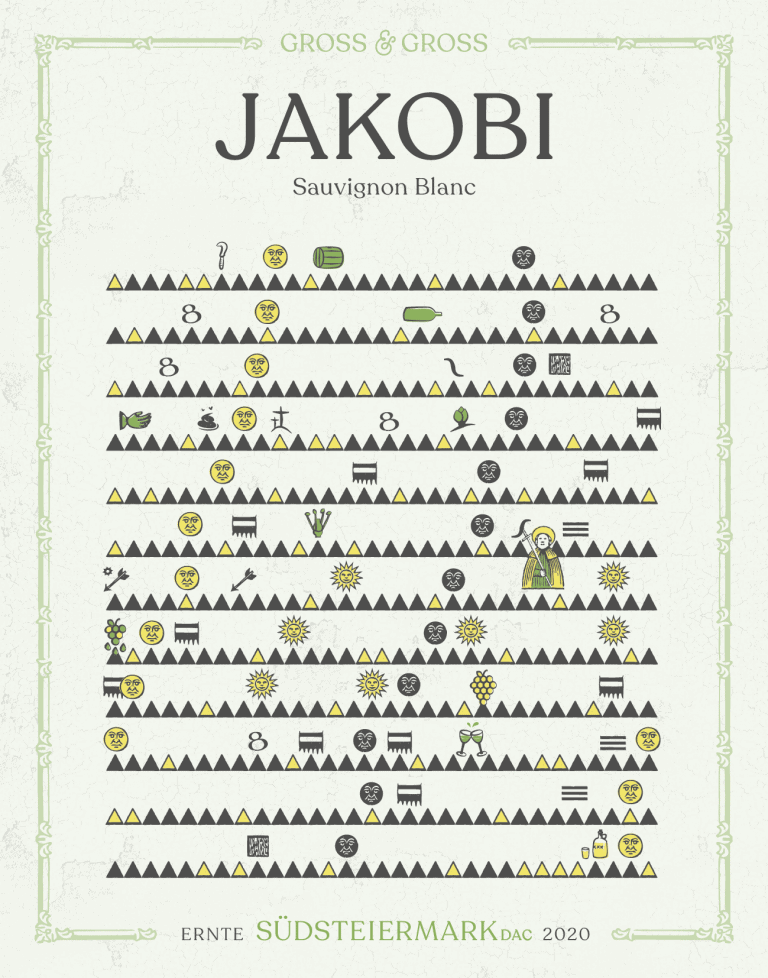
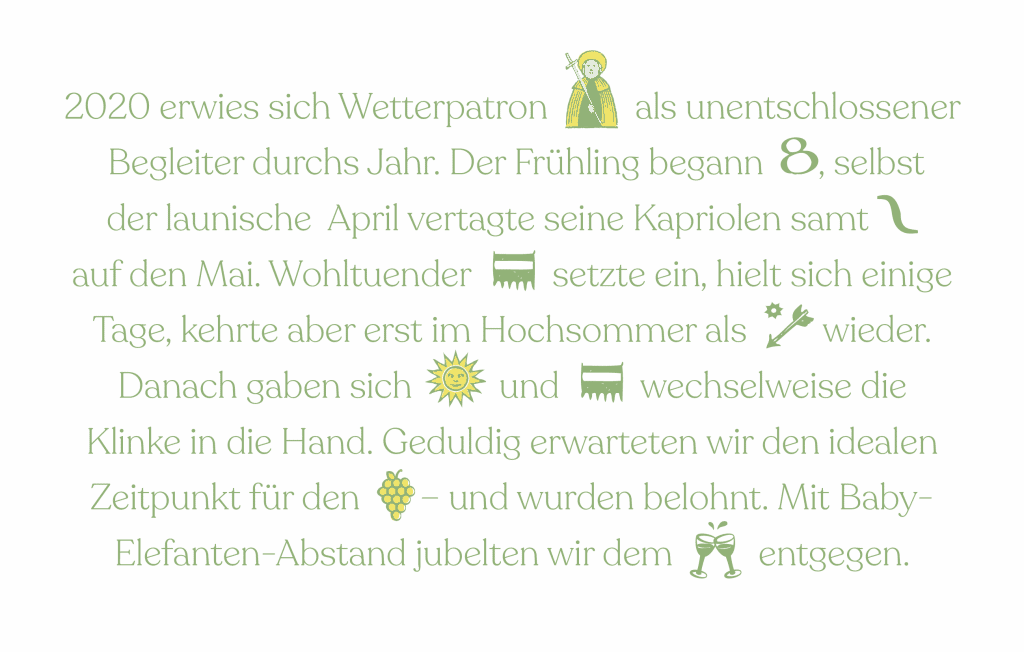
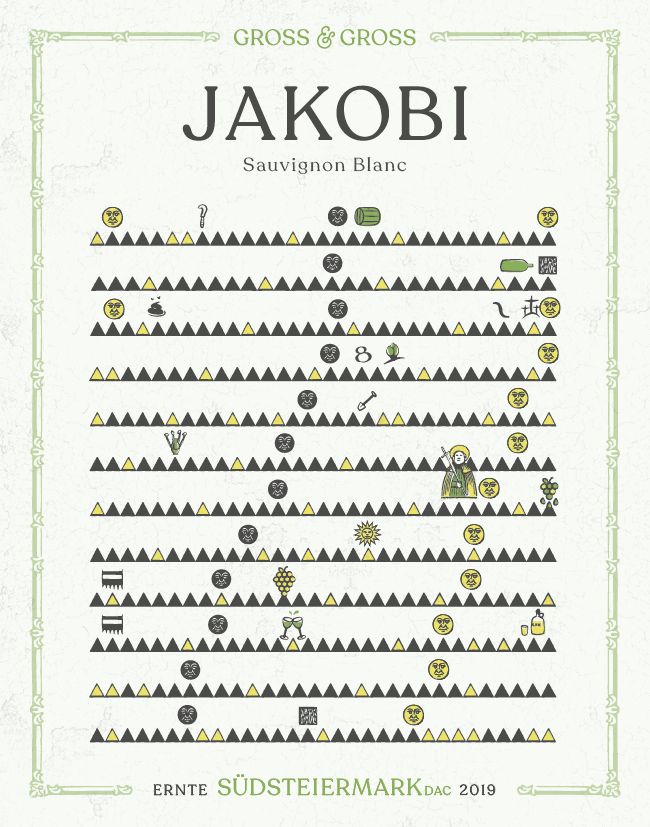
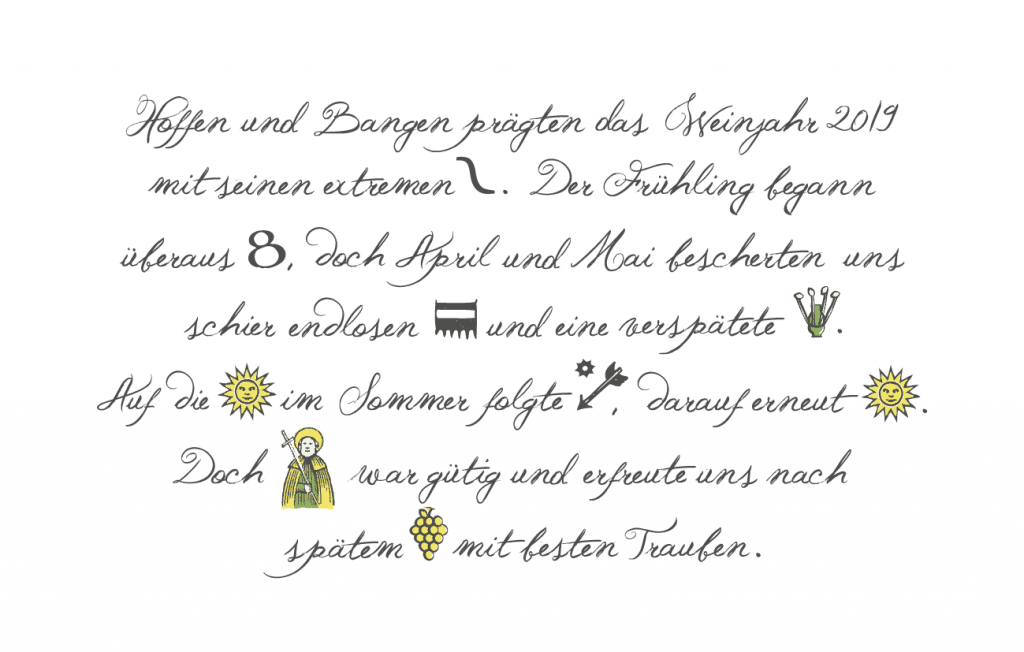
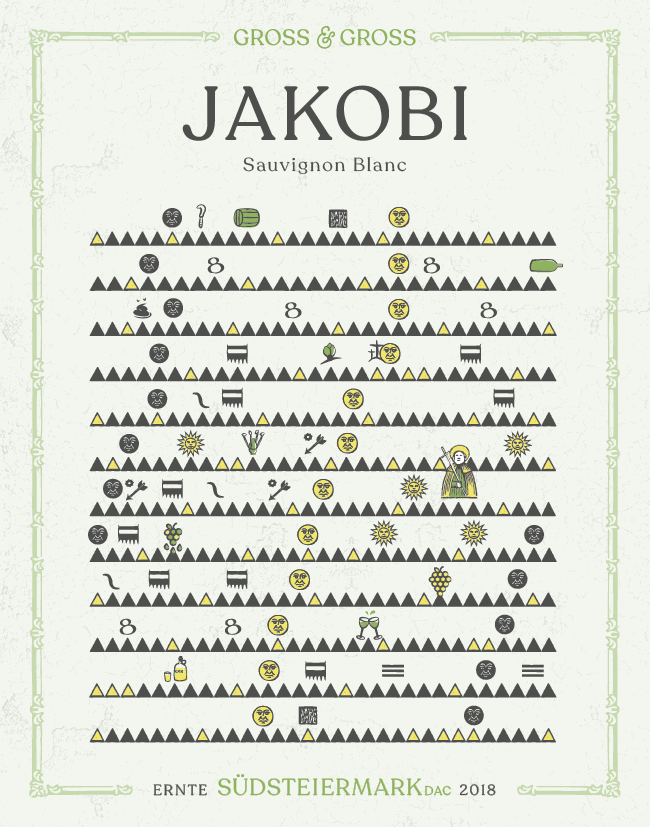
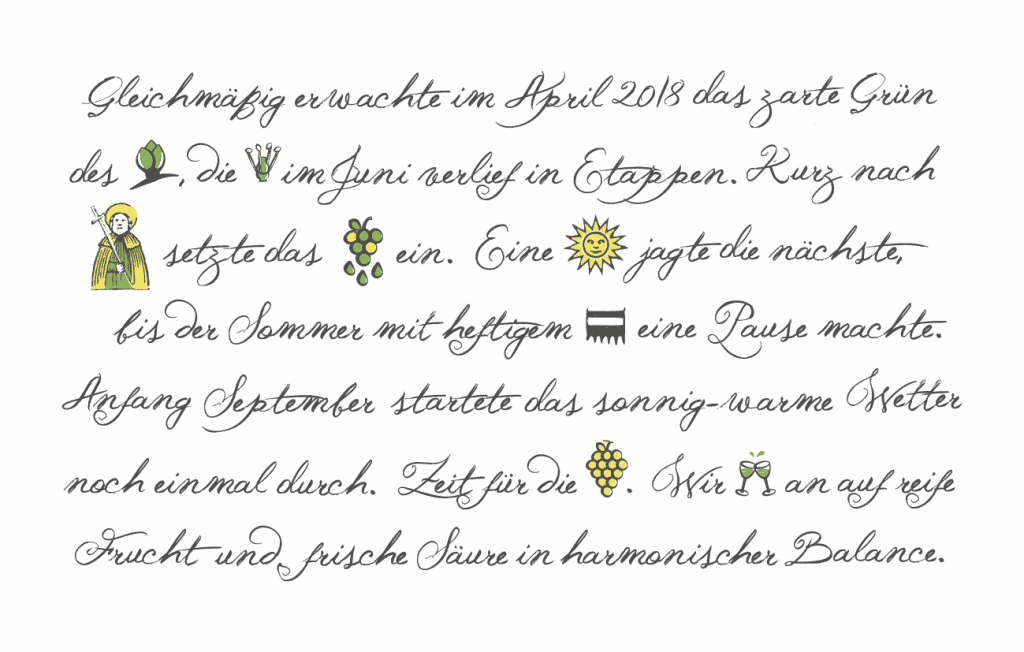
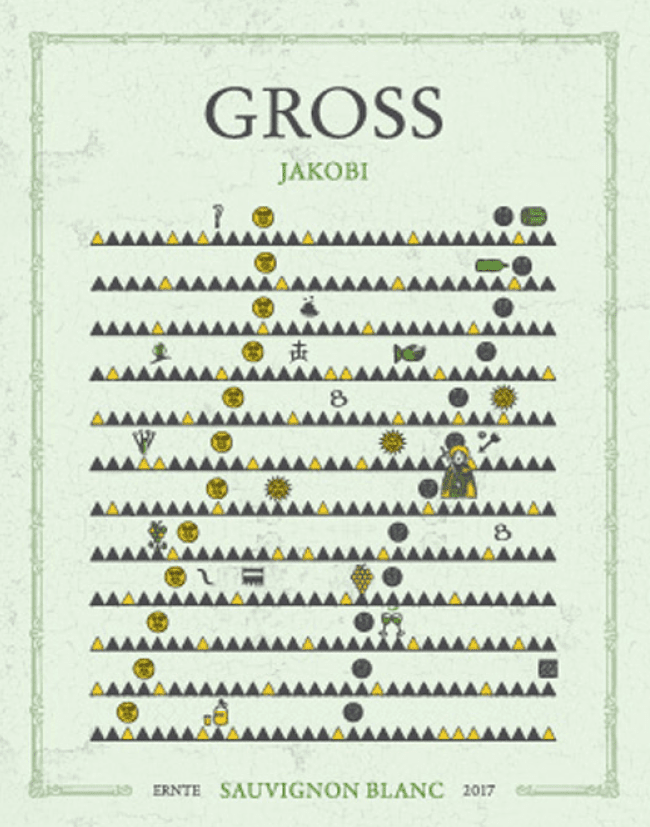
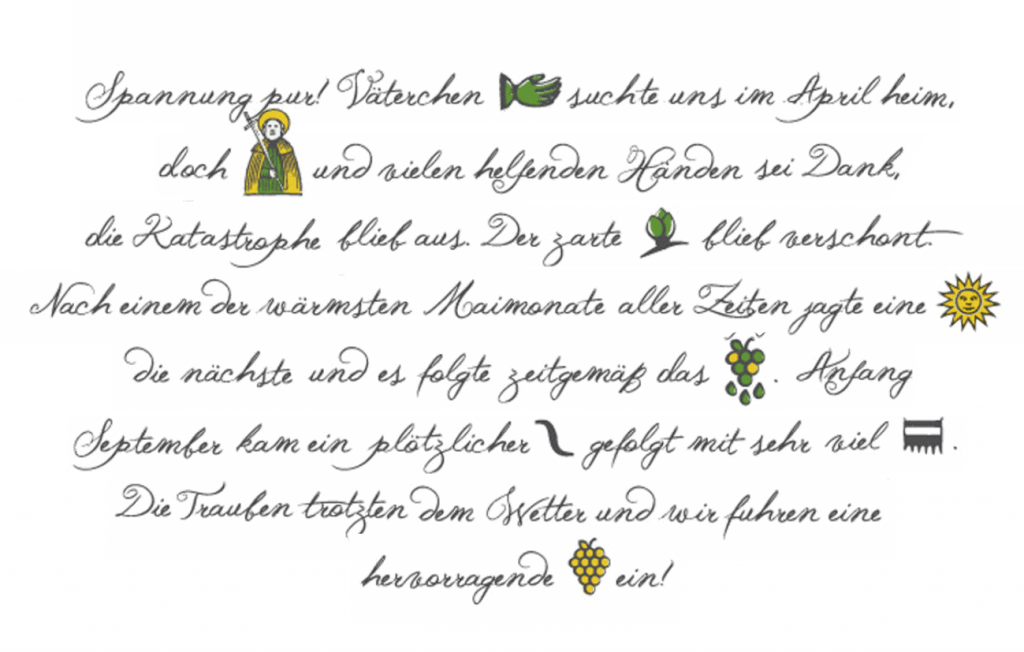
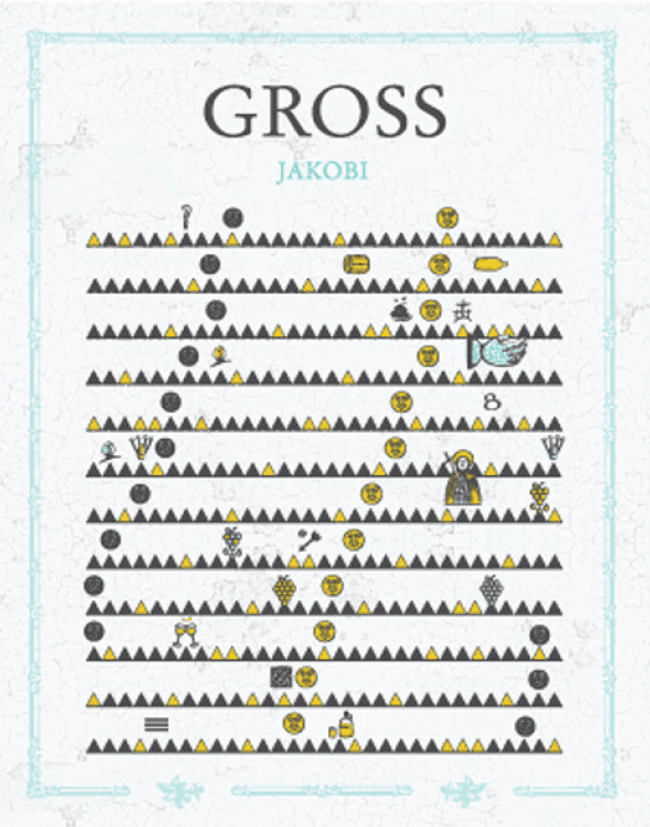
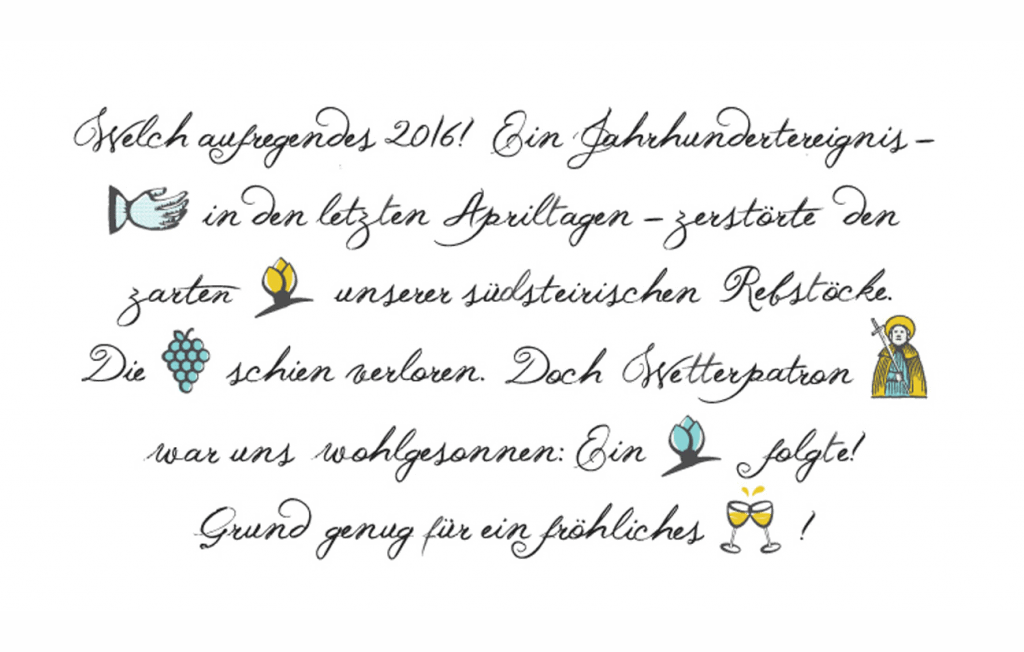
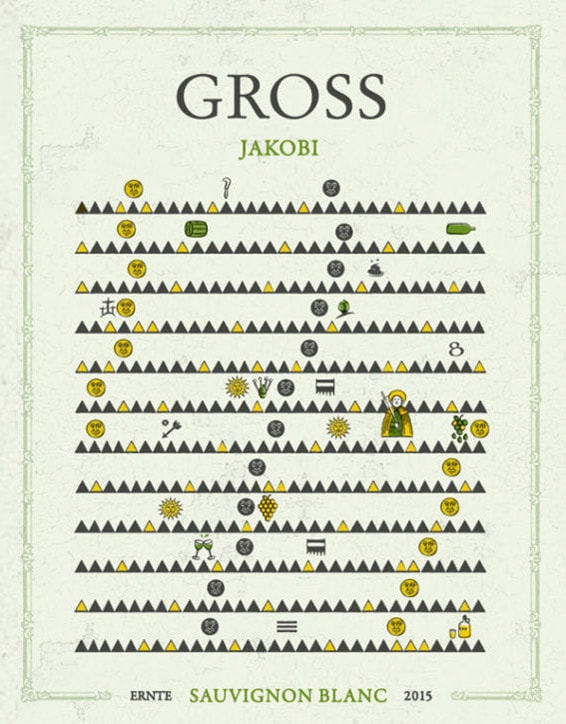
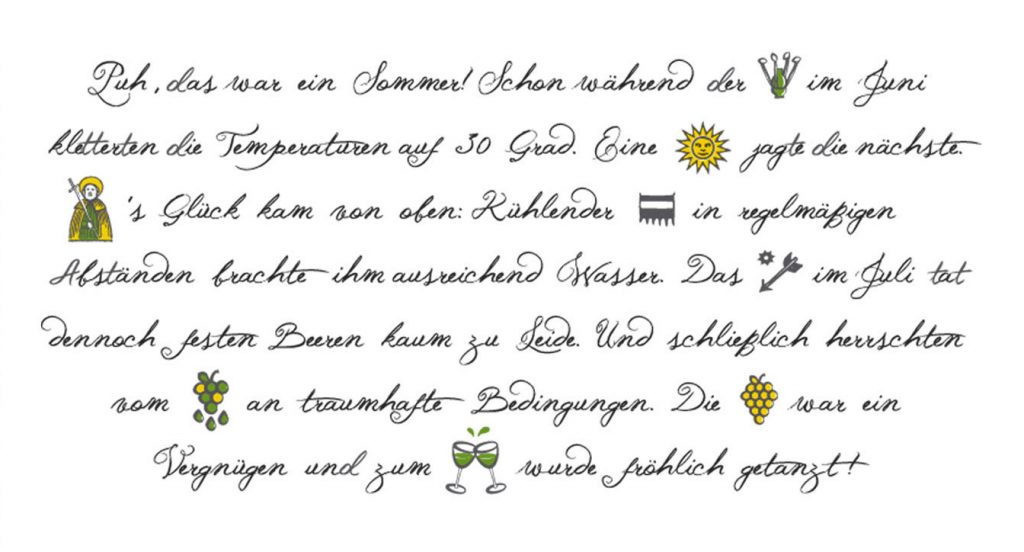
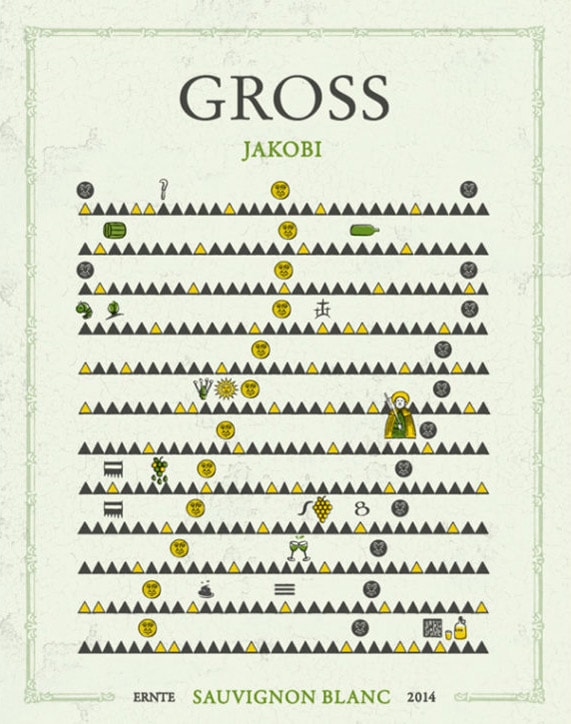
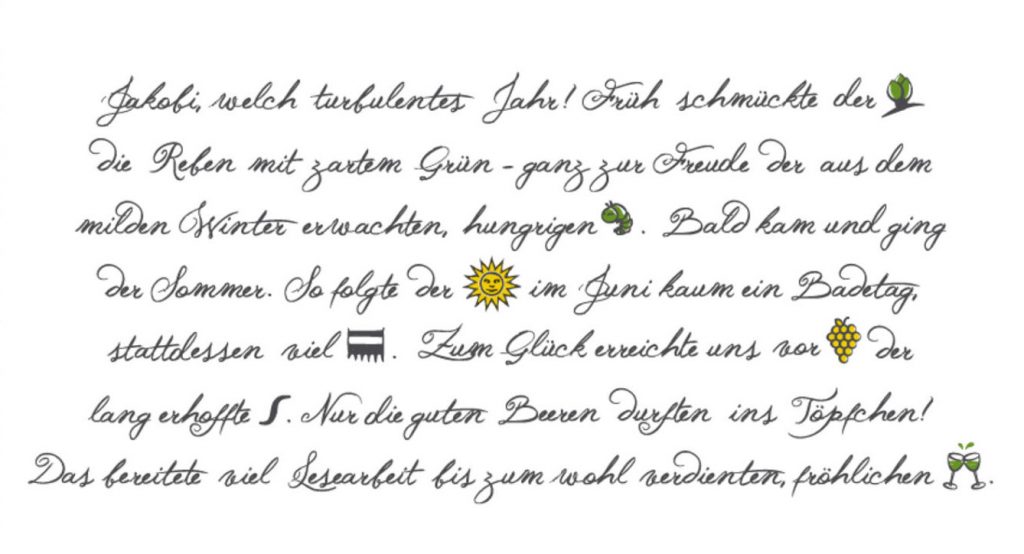
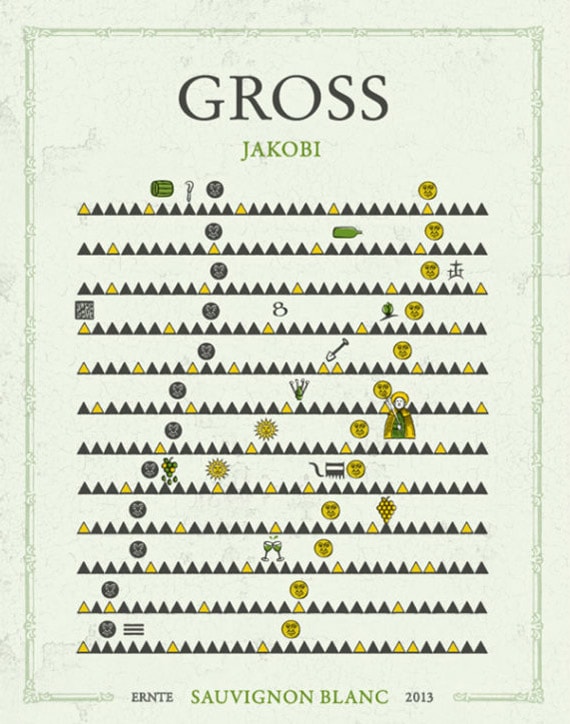
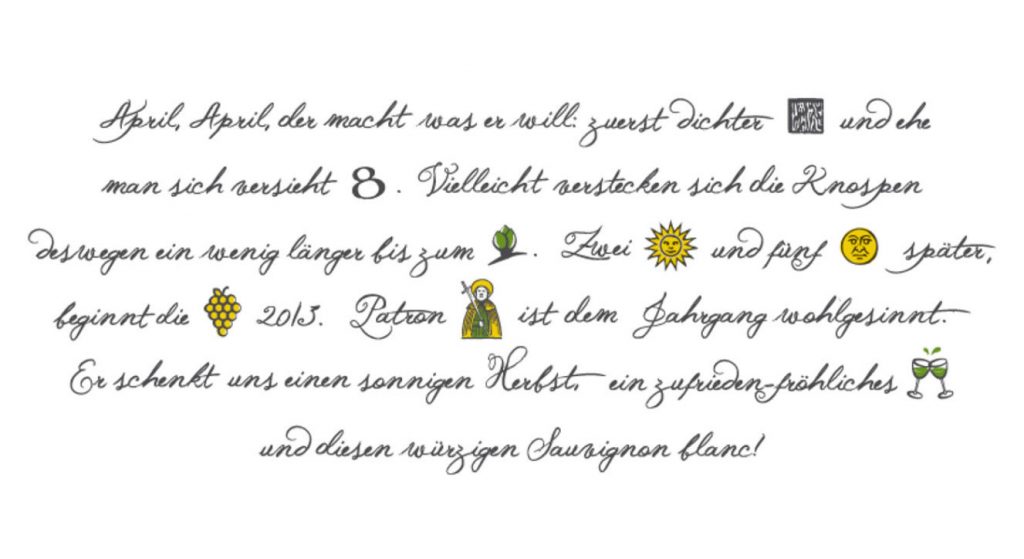
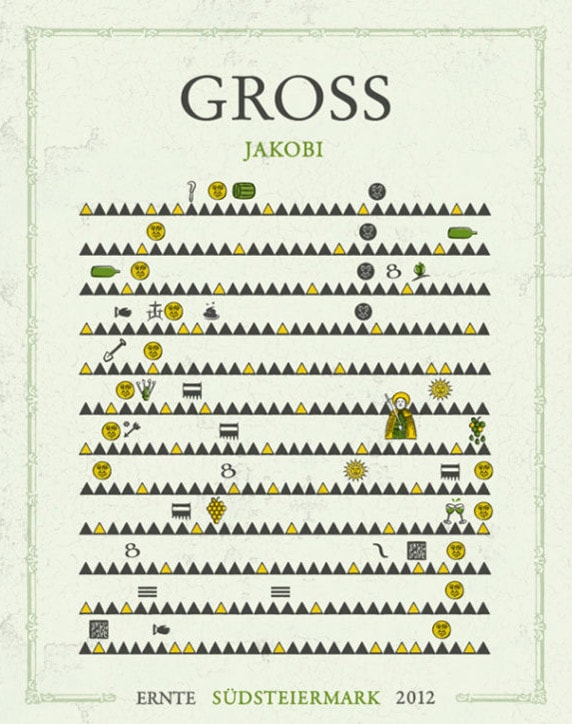

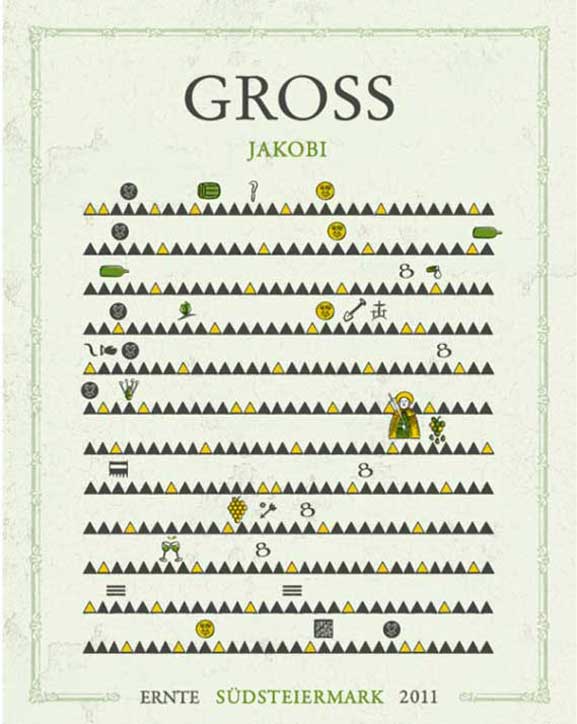
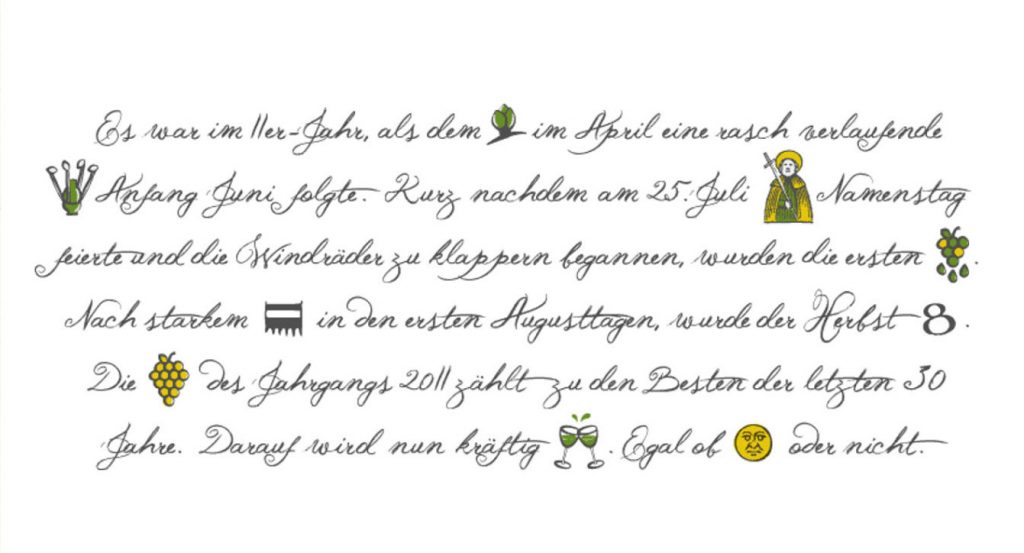
How a Sauvignon Blanc became Jakobi
1.
The Old Farmer’s Almanac was a fixed component in our granny’s kitchen. For the little Gross children, it was all part of the fun to see whose name day it was or whether the weather really turned out as the symbols had predicted it to be. Just like viticulture. And naturally, one thing led to the other.
2.
The children grew older and, at some point, wanted to make their own wine – one that was actually recognisable as such. Then the figure calendar came into their mind – and an old woodcarving into their possession. The latter showed a precursor of the Old Farmer’s Almanac and represented an entire calendar year on a rectangular piece of wood. Perfect for a wine label! Since then, every new Jakobi vintage has had its own label with the appropriate symbols for the respective year.
3.
Now all that was still needed was a name. What appellation would do the region-typical Sauvignon Blanc justice? Maybe something that would match the label? Something with sun or rain or … heavens! Its name must be Jakobi! Jakobus, known as Saint James the Great in English, is the patron saint of the weather and quite a star in South Styria.
The special features of the most recent vintage are immortalised on Jakobi’s bottle label – specific symbols depict viticulture, as do icons taken from the old farmer’s almanac.
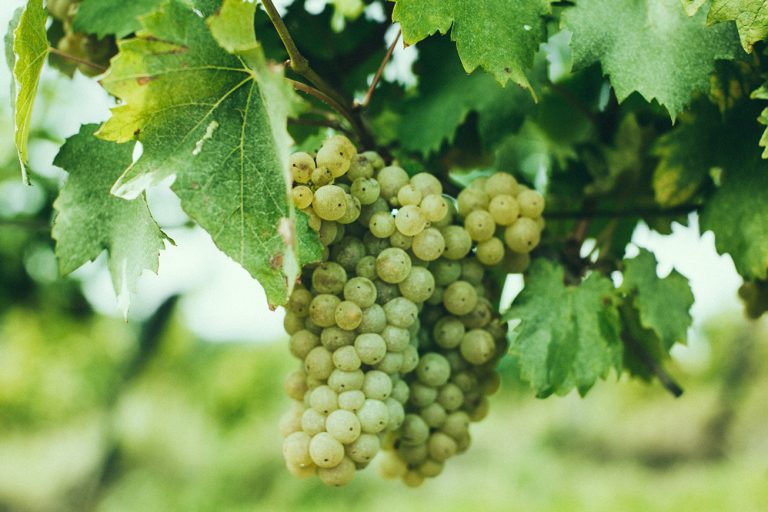
Jakobi is a genuine South Styrian and a Sauvignon Blanc very much to our liking.
Jakobi is a Sauvignon Blanc – possibly the most important grape variety in southern Styria. We especially enjoy drinking it when spending a cosy evening with friends. Jakobi cuts a fine figure both before as well as with meals.
Jakobi goes perfectly with authentic Austrian dishes. An ideal pairing also for chicken breast stuffed with cheese and herbs, vegetable risotto or fish soup. Moreover, it’s ideally suited as an aperitif – whether enjoying it in a group of many, as a couple or as a treat just by oneself.
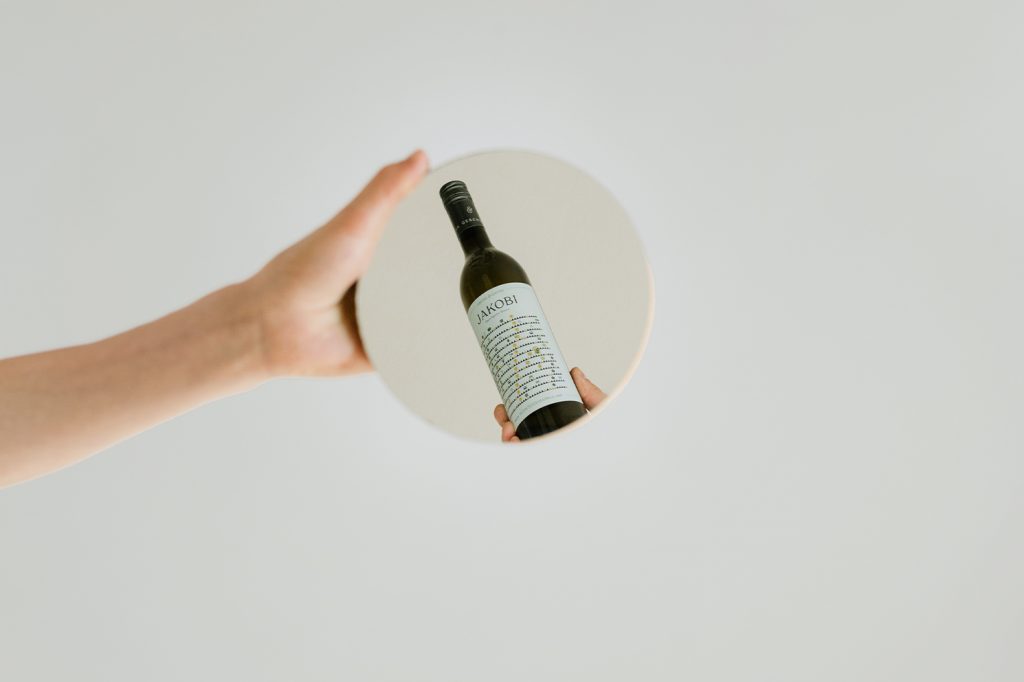
For us
Jakobi is every day
There is, in fact, an official holiday when Ratsch, and in fact the entire region, celebrates Saint James, the patron saint of the weather. Every year on July 25th, klopotecs are set up in Jakobi’s honour – and to keep the birds away from the ripening grapes. Klopotecs are wooden windmills typical of South Styria and Štajerska Slovenija. Their rhythmic rattle protects the grapes until “Martini” on November 11th. A breeze to accomplish.
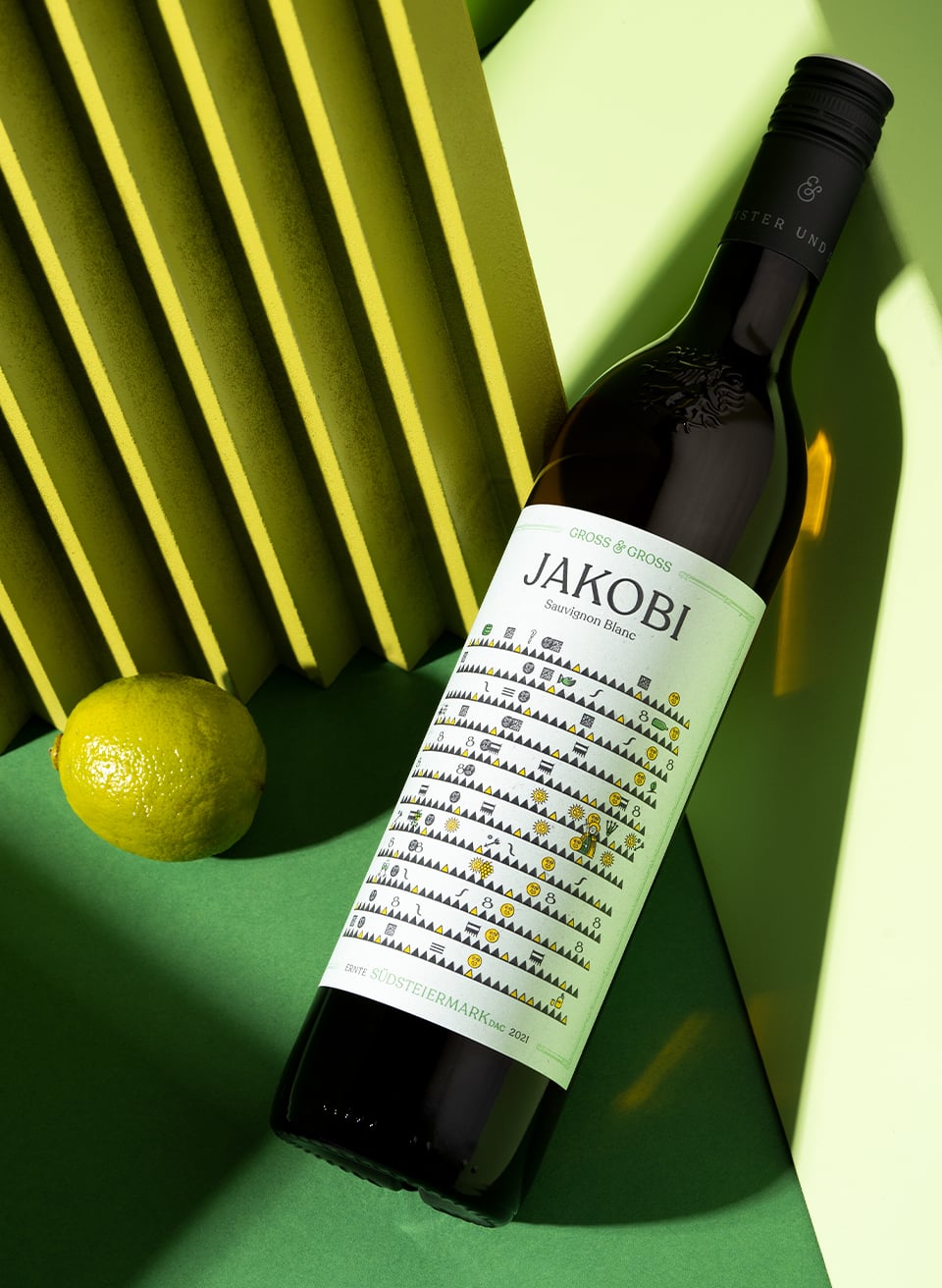
Spicy and elegant – year in, year out.
Jakobi

Jakobi is a genuine South Styrian. A Sauvignon Blanc which can only be found here. Spicy and elegant. Year in, year out.
Mitzi
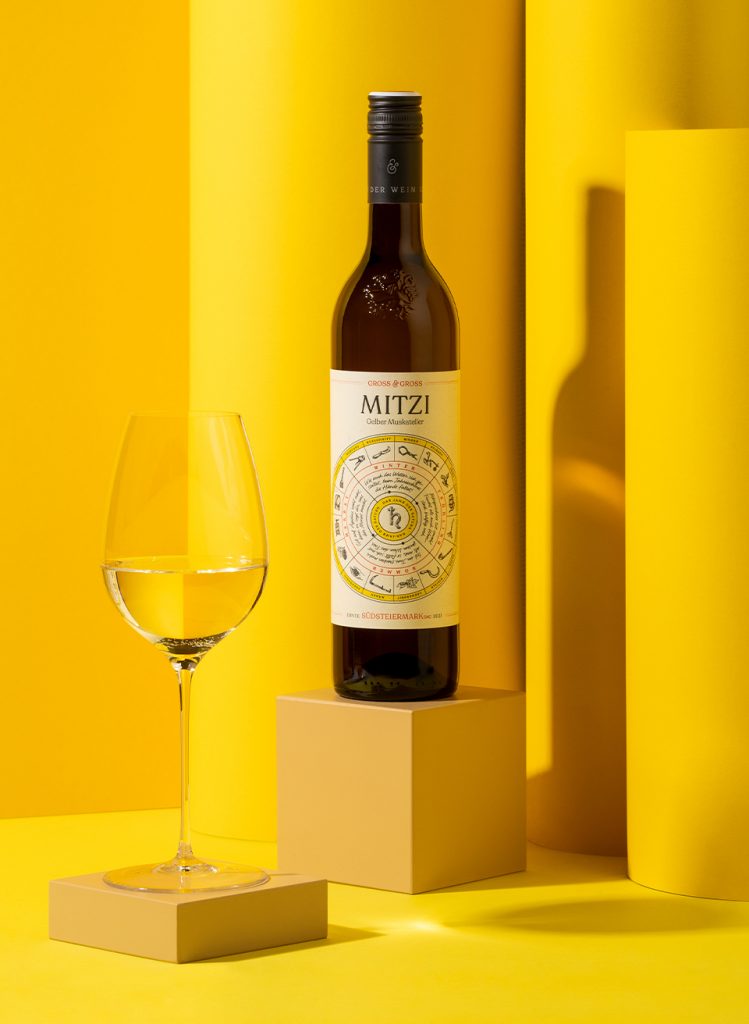
Mitzi is our Gelber Muskateller. Full of vim and vigour, it reflects pure South Styrian joie de vivre.
Fortuna Minor
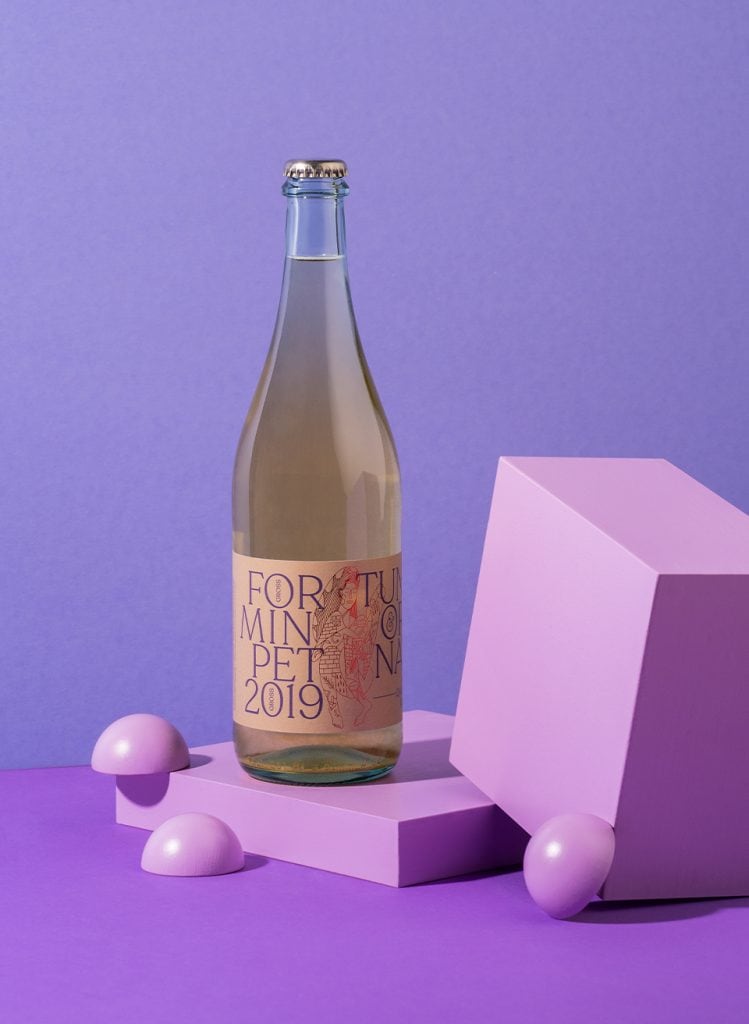
Discovering our Pet Nat is always a lucky find as there are reasons abound to celebrate life’s effervescence.
Flein
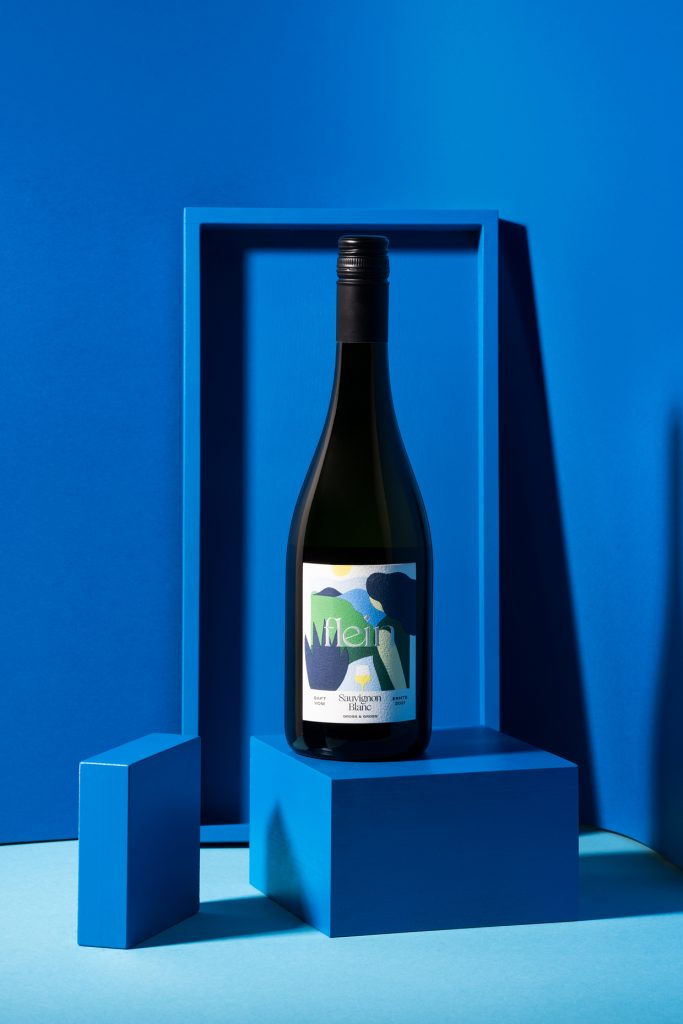
Flein is single-variety grape juice of the highest quality. Both quality and grape variety are reflected in its very palatable taste.
Gute Neuigkeiten
Euch interessiert, was bei uns passiert? Dann gleich unseren Newsletter abonnieren und Teil des Gross & Gross Freundeskreises werden. So erfahrt ihr immer als erstes, wenn’s was Neues gibt. Den jüngsten Jahrgang, zum Beispiel.
